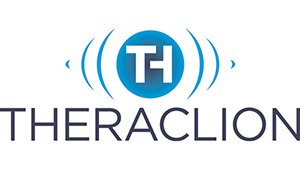In conjunction with Theraclion’s announcement that its Sonovein high-intensity focused ultrasound system received the CE mark for treating varicose veins, the study’s principle investigator, Alfred M. Obermayer, MD, presented the technique and preliminary study results at the Charing Cross (CX) Symposium’s “Innovation Showcase,” which was held in London in April.

The largest vascular symposium in Europe, CX was attended by more than 4,000 physicians and industry professionals.
Obermayer, who is a surgeon at St. Joseph’s Hospital in Vienna and the head of the Institute for Functional Phlebosurgery at the Karl Landsteiner Society in Melk, Austria, is pleased that Sonovein requires “no knife, no needle, no catheter, and no anesthesia.” He said, “The whole procedure is an automatic procedure, and the heart of the system is in the visualization and treatment unit.”
With regard to the Sonovein procedure, Obermayer described using the system in three steps:
- positioning the Sonovein unit and compressing the vein
- planning the treatment on the system’s touch screen
- starting the treatment and visualizing it in real time.
The study’s clinical trial was conducted in Austria. It enrolled 50 legs (62% of whom [31/50] had recurrent varicose veins and 74% of whom [33/50] had veins rated C4 to C6) and followed the participants for three months. Patients with “difficult and challenging situations” were included in the cohort. The procedure was feasible for all patients enrolled in the study, and more than a third of the cases were treated without anesthesia, sedation, or other medication. No significant side effects (i.e., skin changes or skin burns) were observed, but four participants experienced mild and transient dysesthesia. No participant experienced thrombosis or pulmonary embolism. Study limitations included no long-term results and the inability to treat structures within 5 mm of the skin without subcutaneous infiltration.
See related opinion in Venous News: The Evolution of Varicose Vein Treatment: From 19th Century Ligation to Noninvasive Therapy
